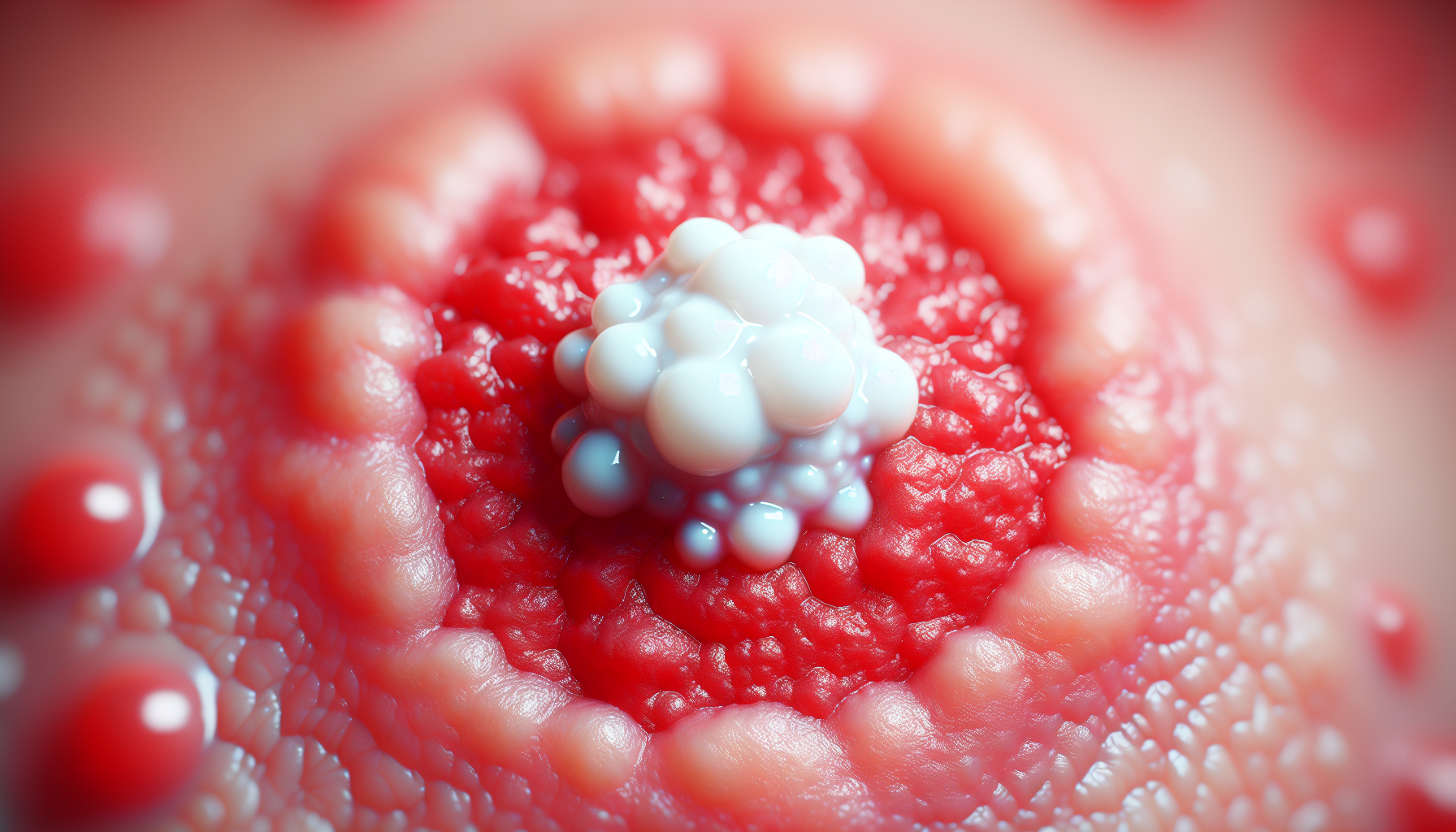Have you ever looked in the mirror and noticed a small, raised bump on your face, only to find a mysterious white ball sitting atop it? It can be quite puzzling, but fear not, because we’re here to shed some light on this common skincare conundrum. In this article, we’ll explore what exactly that white ball in a pimple is, why it forms, and what you can do to treat and prevent it. So, if you’re ready to uncover the secrets behind those pesky little bumps, let’s dive in!
Understanding pimples
Pimples are a common skin condition that occurs when the hair follicles on our skin become clogged with dead skin cells, oil, and bacteria. They often appear as small, raised bumps on the skin and can be accompanied by redness and inflammation. Pimples can occur on various parts of the body, but they are most commonly found on the face, neck, chest, and back. While not a serious medical condition, pimples can be unsightly and cause discomfort.
Formation of a pimple
The formation of a pimple begins with the buildup of dead skin cells, which can clog the hair follicles. The oil-producing glands in our skin, known as sebaceous glands, also play a role in pimple formation. These glands produce an oily substance called sebum, which normally helps to protect and lubricate the skin. However, when the production of sebum increases or becomes trapped within the hair follicle, it can contribute to the development of pimples.
Types of pimples
Pimples come in various forms, and their appearance can differ depending on their type. Some common types of pimples include whiteheads, blackheads, papules, pustules, nodules, and cysts. The white ball in a pimple, also known as a pustule, is a specific type of acne that is characterized by a white or yellowish center. It forms when pus, dead skin cells, and bacteria accumulate within the hair follicle.
The appearance of a white ball
When you notice a white ball in a pimple, it means that the pimple has become filled with pus. Pus is a thick, yellowish or whitish fluid that forms as a result of the body’s immune response to an infection. The white ball in a pimple is essentially a collection of dead white blood cells, bacteria, and other debris that have gathered at the site of inflammation.
The role of white blood cells
White blood cells are an important part of our immune system and help to fight off infections. When a pimple forms, white blood cells are recruited to the site to combat the bacteria that have entered the clogged hair follicle. These white blood cells release enzymes to break down the bacteria, resulting in the formation of pus. The white ball in a pimple is the accumulation of these white blood cells and dead bacteria.
Development of pus
The development of pus in a pimple is a natural defense mechanism of our body. It serves to contain the infection and prevent it from spreading to other parts of the skin. The pus-filled pimple may appear as a raised bump with a white or yellowish center, surrounded by red and inflamed skin.
Sebaceous glands and oil production
Sebaceous glands are located within our hair follicles and produce sebum, an oily substance that helps to keep our skin moisturized. However, when these glands produce too much sebum, it can mix with dead skin cells and bacteria, leading to clogged hair follicles and the formation of pimples. Excessive oil production may be influenced by hormones, genetics, and certain lifestyle factors.
Factors contributing to the formation of white balls
Several factors can contribute to the formation of white balls in pimples. One of the primary factors is the presence of bacteria on the skin. Bacteria, such as Propionibacterium acnes, can multiply within clogged hair follicles and trigger an immune response, leading to the accumulation of pus. Hormonal changes, particularly during puberty, can also increase sebum production and make the skin more prone to pimples.
Treatment options for white balls in pimples
Treating white balls in pimples involves addressing the underlying causes and reducing inflammation. Over-the-counter topical treatments containing benzoyl peroxide or salicylic acid can help to unclog the follicles, kill bacteria, and reduce oil production. In more severe cases, a dermatologist may prescribe oral antibiotics or topical retinoids to control inflammation and prevent further breakouts. It is important to avoid squeezing or popping pimples as it can lead to scarring and worsen the inflammation.
Preventing the formation of white balls in pimples
Preventing the formation of white balls in pimples requires a consistent skincare routine and certain lifestyle habits. Regularly cleansing the skin with a gentle cleanser can help to remove excess oil, dead skin cells, and bacteria. Avoiding harsh or abrasive skincare products and using non-comedogenic products that do not clog the pores can also reduce the risk of pimples. Maintaining a balanced diet, managing stress levels, and getting enough sleep can also contribute to overall skin health and prevent breakouts.
In conclusion, the white ball in a pimple is a result of the body’s immune response to a bacterial infection within a clogged hair follicle. Understanding the formation of pimples, the role of white blood cells, and the factors that contribute to their development can help in finding effective treatment options and preventative measures. By adopting a proper skincare routine and making healthy lifestyle choices, you can minimize the occurrence of white balls in pimples and maintain clearer, healthier skin.
